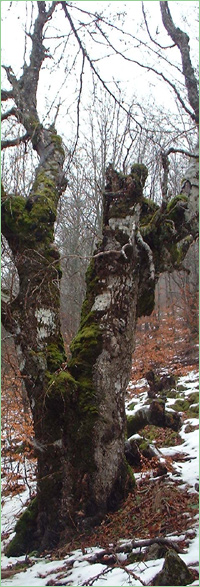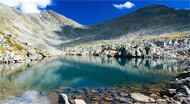Golyama Kamchia (Unique identification code in the register: BG0000501)
Category: PZ under the Habitat Directive
Area: 588.17 hectares Location:
1.
District: Shumen, Municipality: Shumen, Locality: Ivanski, Marash, Radko Dimitrievo, Salmanovo, Shumen
2.
District: Shumen, Municipality: Smyadovo, Locality: Byal bryag, Cherni vrah, Kalnovo, Novo Yankovo, Smyadovo, Yankovo, Zhelad
3.
District: Shumen, Municipality: Varbitsa, Locality: Sushina
4.
District: Shumen, Municipality: Veliki Preslav, Locality: Han Krum, Milanovo, Troitsa, Veliki Preslav
5.
District: Varna, Municipality: Dalgopol, Locality: Dalgopol, Kamen dyal, Komunari, Krasimir, Partizani, Tsonevo, Velichkovo, Аrkovna
Falls in the territory of the following Regional Inspectorates of Environment and Water (RIEW):
1.
SHumen - ul."Syedinenie" 71 et.4
2.
Varna - ul."Jan Palah" 4
Ordinance for announcement:
Ordinance No.РД-38 from 17.01.2024
2-2-501-38-2024
Record for protected zone (link):

Aims of the declaration:
1. Protection and maintenance of the type of natural habitat specified in item 2.1, the habitats of the species specified in item 2.2, their populations and distribution within the boundaries of the zone, to achieve and maintain their favorable nature conservation status in the Continental biogeographical region;
2. Improving the structure and functions of the natural habitat 91E0;
3. Habitat improvement for the Triturus karelinii;
4. If necessary, improvement of the condition or restoration of the type of natural habitat specified in item 2.1, habitats of the species specified in item 2.2 and their populations.
Objects of protection (species or habitats):
1. Article 6, paragraph 1, section 1 from Biological Diversity Act: 91E0 *Alluvial forests with Alnus glutinosa и Fraxinus excelsior (Alno-Pandion, Alnion incanae, Salicion albae);
2. Article 6, paragraph 1, section 2 from Biological Diversity Act: Mammals – Vormela peregusna, Lutra lutra, Myotis myotis, Myotis blythii, Rhinolophus ferrumequinum, Rhinolophus hipposideros; Amphibians and reptiles – Bombina bombina, Bombina variegata, Triturus karelinii, Emys orbicularis; Fish – Cobitis taenia, Barbus meridionalis, Barbus bergi, Rhodeus amarus; Intervertebrates – Cerambyx cerdo, Morimus funereus, Lucanus cervus, Rosalia alpina, Euplagia Callimorpha quadripunctaria, Lycaena dispar, Unio crassus; Plants – Himantoglossum caprinum.
Current prohibitions and regimes:
1. It is prohibited conducting races with motor vehicles outside the existing roads and the places regulated for this purpose;
2. It is prohibited movement of motorcycles, ATVs, UTVs and buggies off existing roads in non-urban areas. The prohibition does not apply to routes for the movement of the listed motor vehicles determined on the basis of a normative act, as well as in case of disasters, emergencies and for carrying out fire-fighting, emergency, control and rescue activities;
3. It is prohibited to drainage of coastal floodplains of rivers and other natural water bodies , changes in the hydromorphological regime through drainage, removal of sediments, correction, barricading of rivers, except in cases in urban areas and in cases of flood danger, which may lead to a risk to human life and health or the occurrence of material damage, in case of disasters and accidents and to improve the condition of the natural habitats and the habitats of the species under item 2.
4. It is prohibited construction of barriers to the river course hydrotechnical facilities, not allowing access to the viewing of the species according to item 2.2 up and down along the river;
5. It is prohibited to change the way of permanent use, plowing, afforestation and conversion into permanent plantations of meadows, pastures and grassland, when using agricultural lands as such;
6. It is prohibited to remove landscape features (borders, vital single trees and groups of trees, traditional strips occupied by shrub and tree vegetation among lands under cultivation, protective forest belts, stone fences and hedges), when using agricultural land as such, except in cases to removal of invasive alien species of trees and shrubs;
7. It is prohibited the prospecting for minerals (construction and stone materials), creating new and expanding concession areas for extraction of minerals (construction and stone materials)
8. It is prohibited the use of fertilizers, soil improvers, biologically active substances, nutrient substrates and plant protection products that do not meet the requirements of the Plant Protection Act;
9. It is prohibited the use of mineral fertilizers in meadows, pastures, grasslands, abandoned agricultural lands and forest areas, as well as plant protection products of professional category of use in these areas except for calamity, epiphytosis or the use of selective methods to combat invasive alien species;
10. It is prohibited to use of organic sludge from industrial and other waters and household waste for introduction into agricultural land without permission from the specialized bodies of the Ministry of Agriculture, Food and Forestry and when the concentration of heavy metals, metalloids and persistent organic pollutants in sludge exceeds background concentrations according to Annex № 1 of Ordinance № 3 of 2008 on the norms for permissible content of harmful substances in soils (SG, issue 71 of 2008);
11. It is prohibited to use of irrigation water that contains harmful substances and waste above the permissible norms;
12. It is prohibited burning of stubble, syllables, roadside strips and areas with dry and moisture-loving vegetation;
13. It is prohibited carrying out felling in natural habitat with code 91E0 *, except for the needs of facilities (elements) of the technical infrastructure, for prevention of dangers endangering human life and health, in case of disasters and accidents, for maintenance / improvement of natural habitats and habitats of the species under item 2;
14. It is prohibited extraction of wood and biomass in forests in the old age phase, except in cases of damage of more than 50% of the area of the respective forest in the old age phase due to natural disasters and calamities; in old age forests, through which existing forest roads and other infrastructure objects pass, if proven necessary, felling of single dry, damaged, endangered or obstructing the safe movement of people and vehicles or the normal functioning of infrastructure objects trees is allowed;
15. It is prohibited grazing of domestic animals in forest areas, which are designated for forests in the old age phase.
16. It is prohibited flooding of drying tributaries with falls and landmasses.

|
|

|





